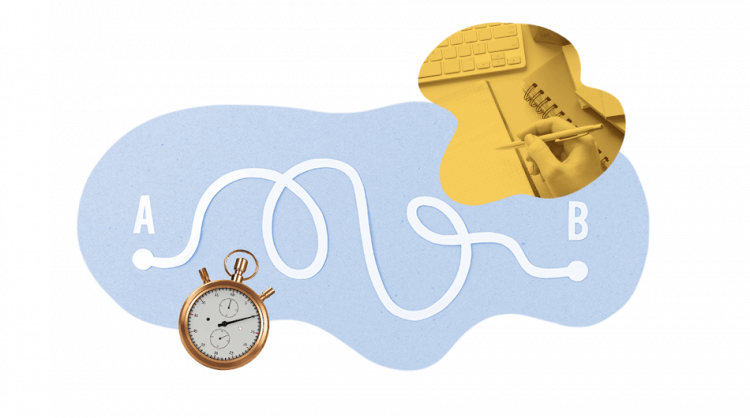The word meta refers to the thing itself, seen from a higher perspective. It is the self-awareness of an idea or a concept. Therefore, meta-teaching means reflecting on the tutoring practice itself – teaching about teaching. It is a conscious practice that aims to master the educational process in the virtual classroom and lead to a highly engaged audience.
Why engage your online students with meta-teaching in the virtual classroom?
Meta-teaching is related to the knowledge, research, and implementation of various tutoring practices from start to finish – from creation to design to presentation to updating.
Having an in-depth understanding of online tutoring has two major effects. First, meta-teaching in the virtual classroom will help you upgrade your own teaching skills. Second, it will stimulate your audience to be active learners and to better understand the learning process. Moreover, using meta-teaching practices will also encourage their meta-thinking or metacognition.
Metacognition is thinking about one’s thinking. It refers to the process of planning, executing, and evaluating student performance and comprehension in the virtual classroom.
Some metacognitive activities include planning how to approach a learning task, using appropriate skills and strategies to solve a problem, monitoring student comprehension of text online, self-assessments, evaluating progress, etc.

Metacognitive activities will definitely boost your students’ confidence and make them feel like they are achieving their educational goals. Additionally, including these activities in your meta-teaching plan can create a stronger connection between you as an online tutor and your audience, which will affect the level of general engagement in the learning process.
Meta-teaching practices are very popular in all educational levels and institutions. When teachers reflect and adjust their approach accordingly, online student learning and performance improves. However, meta-teaching not only impacts the audience in the virtual classroom, but the online tutors, as well. It actually encourages online teachers and creates a passion for teaching. These practices also improve motivation and remind tutors why they chose their profession in the first place
Generally, meta-teaching activities follow this sequence: plan, strategy, monitor, evaluate. Online tutors start by planning an online session, then include relevant teaching strategies, then they monitor student learning, and finally evaluate the strategy itself.
Improve your meta-teaching experience metacognition
Meta-teaching in the virtual classroom can help teachers find and fix flaws in the teaching system. Therefore, it contains functions like:
- understanding
- changing
- reflecting on teaching
Moreover, improving your meta-teaching will improve the teaching of metacognitive theory and the metacognition of your online students. The use of metacognition has many benefits. It can be divided into the following categories:

- Being aware of successful learning strategies, the functioning of ideas, and the elements of a problem
- The intentional choice of a certain strategy based on the advantages, the solution to a problem, and the creation of an idea
- Understanding the learning elements and process, and developing this knowledge
However, beyond the definition of “thinking about thinking,” online tutors should aim to create specific behaviors related to the effective learning of their online students. Since awareness is still not understanding, online tutors should carefully plan their activities to achieve their specific educational goals. Your students can be aware without understanding the subject. They can also understand it without reflecting on the learning process. In either of these cases, your meta-teaching strategies will be quite different.
The main steps of teaching metacognition include:
- Teaching students that their ability to learn is mutable
- Improving planning and goal-setting
- Giving students opportunities to monitor and adjust their learning
Metacognition includes a variety of processes. Therefore, to offer a relevant meta-teaching strategy, online tutors should be aware of both learning and teaching mechanisms and be able to develop them simultaneously.
5 metacognitive strategies for successful online tutoring

Online students are often unaware of who they are and what they need to do to improve themselves and the way they learn. However, having them in the virtual classroom means that you have the chance to challenge, motivate, and reinvent their methods of conscious learning and living. So, get to know your students and their specific learning styles. And change their learning experience for the better with some of the metacognitive strategies below.
Self-assessment
It is quite simple and easy to complete the activity that leads online students to conduct a self-assessment of new content. It can be executed with the help of several key questions created before a new lesson. They may be in the form of a homework assignment, a set of quiz questions, or a short writing task in the virtual classroom. The idea behind the self-assessment technique is that finding out what online students already know can help them access a new skill, concept, or idea.
Concept map
Concept maps respond to a focus question that the online tutor has defined. Defining the question is critical because the better the question the richer the concept map can be. Online students often create concept maps with key ideas related to the topic. However, the idea is to answer the question. To make sure the activity is completed properly, demonstrate how to design a concept map. Show online students how the readings, videos, assignments, and activities are connected to the course’s learning outcomes and to other courses. It is your job to guide them to find the answer to the question.
Reflective writing
The virtual classroom’s metacognitive strategy helps online students make connections between new lessons, homework assignments, or a project that they have to complete alone. Writing helps students observe their own knowledge before, during, and after every new learning experience. Reflective writing is really useful when you are trying to connect knowledge with real life. The most popular reflective writing activity is the “minute paper” where your online students have to express their thoughts on the latest assignment or educational material.

Wrappers
This is a quick and easy way to monitor and evaluate every metacognitive activity. A wrapper is an activity that surrounds pre-existing learning or assessment tasks and fosters student metacognition. Exam wrappers are short, reflective writing activities that ask students to review their applied study strategies in relation to their performance on an exam with a focus on adjusting their future learning practices accordingly. The process of responding to exam wrapper questions enables students to develop self‐regulation skills.
Notes
Metacognitive note taking is an extremely useful skill in every classroom or for any educational activity. Provide your online students with guidance and models on how to take good notes during class. You can try different styles that the online students with different e-learning styles can benefit from. It is best to get them to reflect on the lesson rather than just write mechanically. Stimulate the students to pay attention to the key ideas and to create relevant headings. You can also make your students try to retrieve information from their notes and, while doing so, try to spot areas where they didn’t quite get all of the information.
